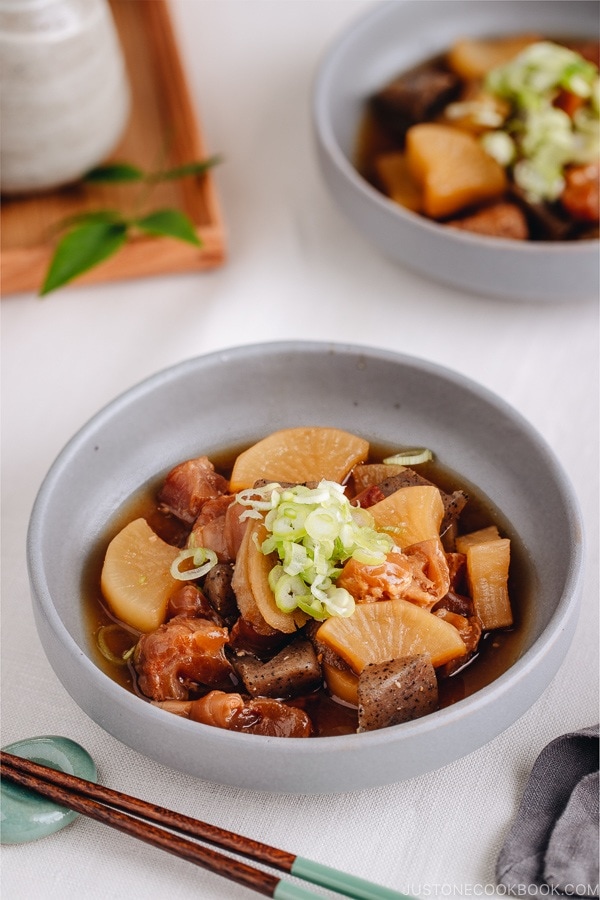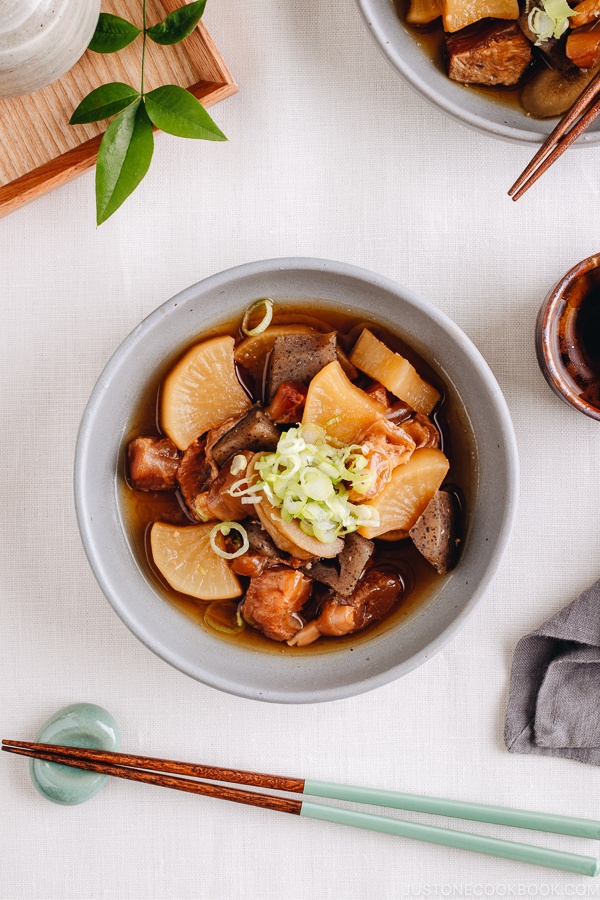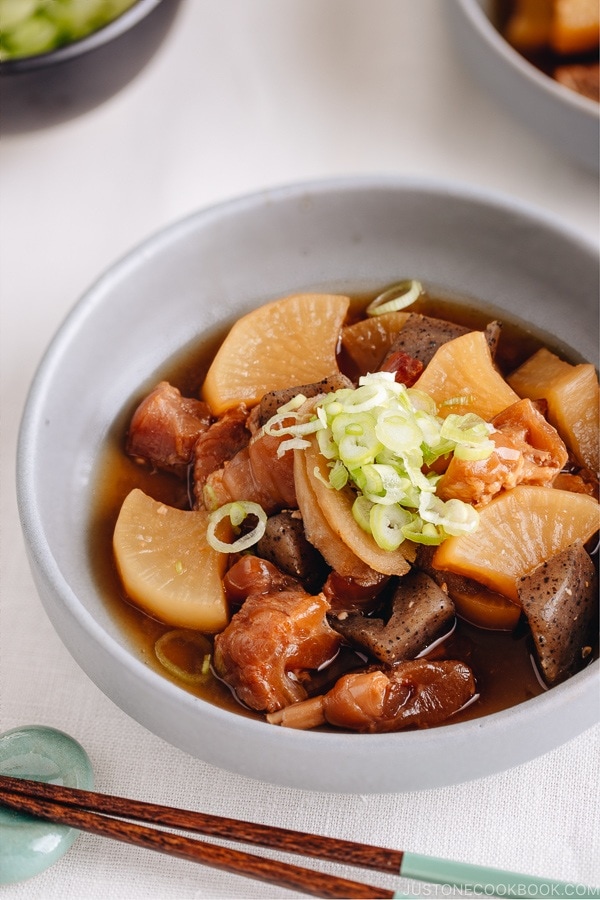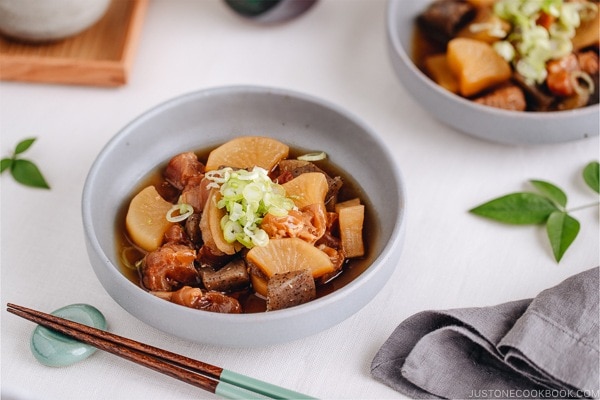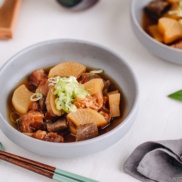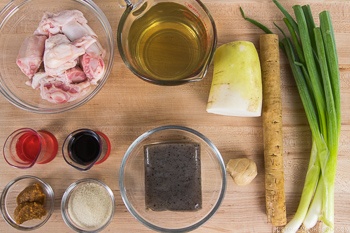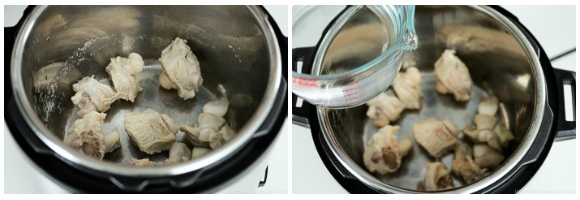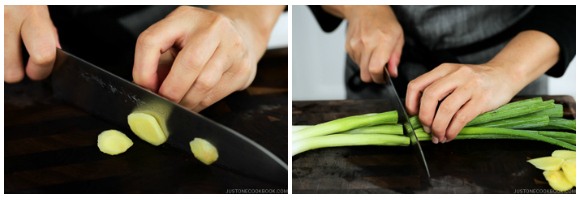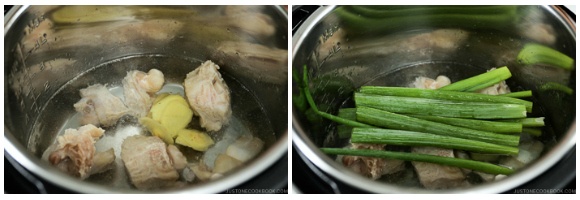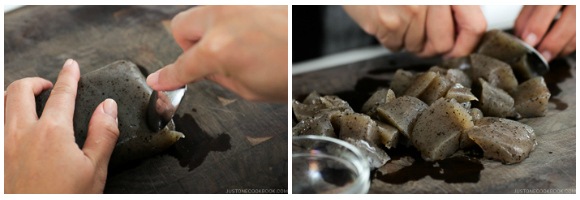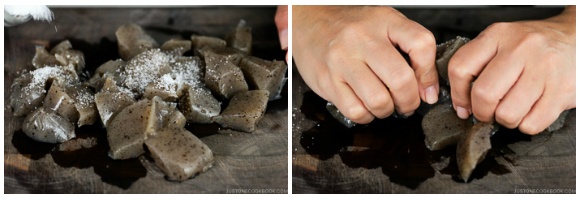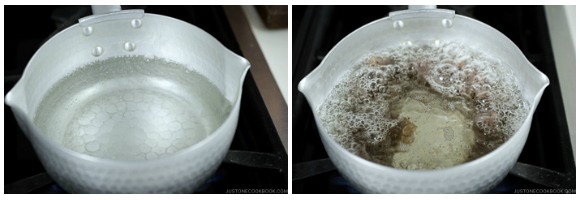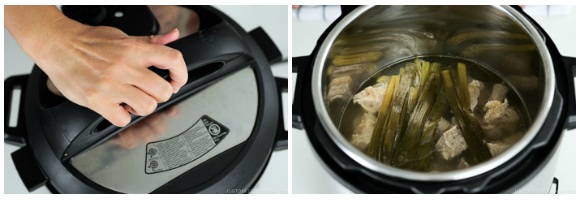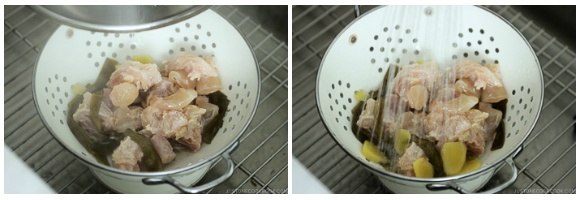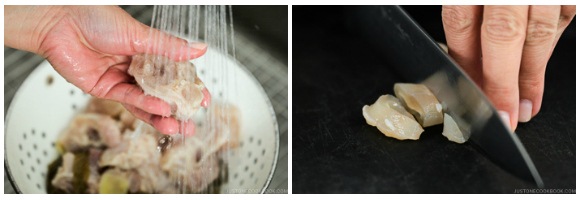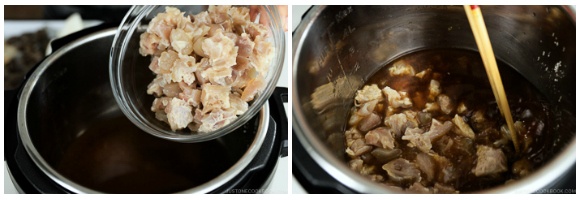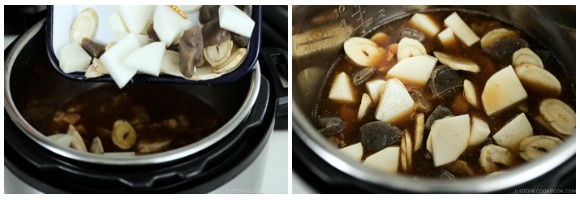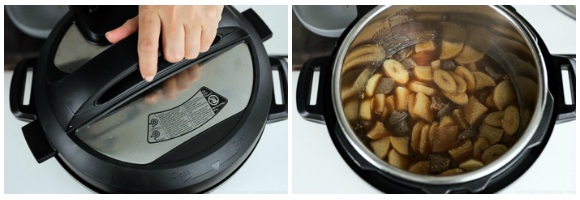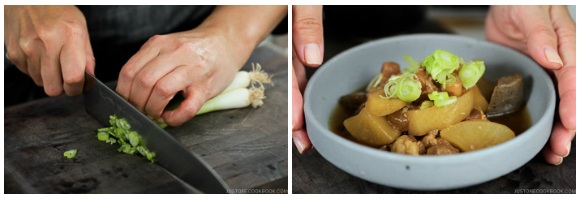Beef tendon may not be a common ingredient in Western cultures, but it is loved for its luxurious textures and health benefits in Japanese and many Asian cuisines. Every now and then, I receive recipe requests for Japanese beef tendon dishes from readers who have tried and loved them. I procrastinated for a while but finally challenged myself to cook it for the very first time. Today I present one of the most popular beef tendon dishes in Japan – Gyusuji Nikomi (牛筋煮込み) or Japanese Beef Tendon Stew.
What’s Beef Tendon?
Beef tendons are commonly used as an ingredient in some Asian cuisines and I’ve tried them in Chinese, Japanese, Korean, and Vietnamese food in the past. Frankly speaking, they are not my favorite cut of meat because of the wobbly, flabby, jello-y texture (I like crispy and crunchy food). People who enjoy beef tendon appreciate the soft-tender texture and the rich flavors. Of course, they are high in collagen, which is good for your skin, joints, and hair. Tendons are tough and fibrous but become tender after a long period of cooking. With the use of a pressure cooker, the cooking process can be shortened without compromising the perfect texture and delicious flavors. Properly cooked beef tendons contribute wonderful flavors to the final dish, with deep and rich broth and tendons that literally melt in your mouth.
Beef Tendon in Japanese Cuisine
Growing up in the Kanto (east) region of Japan, the beef tendon wasn’t a common cut of meat sold in regular grocery stores or on restaurant menus. Tendons are more popular and eaten in the Kansai and Kyushu (west/south) regions of Japan, probably due to the geographical distance to the neighboring Asian countries and their cuisine influence. You can find tendons used in stew, Oden, Doteni (どて煮), Okonomiyaki, Yakisoba, and Japanese curry in the west/south of Japan.
Japanese Beef Tendon Stew (Gyusuji Nikomi)
Gyusuji Nikomi (牛筋煮込み) is probably the most popular beef tendon dish in Japan. Gyusuji (牛筋) means beef tendons and nikomi means stew in Japanese. Beef tendons are prepared first by boiling and simmering, and only after properly prepping, they are stewed in a soy sauce-based savory dashi broth with daikon. Some variations of the stew include konnyaku (konjac) and other root vegetables like carrots and gobo (burdock root). Note that beef tendons sold in Japan often come with some meat. However, beef tendons I can find at Chinese grocery stores here in the US are usually just tendons without meat.
5 Steps to Prepare Japanese Beef Tendon Stew
It takes 5 steps to make the Gyusuji Nikomi properly, and here’s how:
Step 1: Boil Beef Tendons
Hot boiling water helps to rinse off any unpleasant smell of beef tendons, which determines the flavors of your final fish, so do not skip this most important step.
Step 2: Pressure Cook/Simmer with Aromatics
Next, we’ll simmer the tendons with aromatics like ginger and green onions to take care of any residual smell. To achieve the tenderness you’re looking for in a shorter cooking time, a pressure cooker comes in handy. If you’re using an electric pressure cooker, you can even leave the kitchen and do something else.
Step 3: Clean Tendons
Once pressure cooking is finished, you must clean every part of the tendons thoroughly. It’s important to work with clean tendons to get a clean taste.
Step 4: Pressure Cook/Simmer with Broth and Seasonings
Now that you have clean tendons, it’s time to add flavors to them in dashi and seasonings. We give the tendons a head start so they have more time to absorb flavors before adding other ingredients.
Step 5: Pressure Cook/Simmer with Other Ingredients
Finally add the other ingredients such as daikon, gobo (burdock root), and konnyaku. At this step, you just need to make sure daikon is fully cooked, without over or under-cooking. Homey and comforting, this Japanese Beef Tendon Stew will warm your soul, especially this time of the year. Wish to learn more about Japanese cooking? Sign up for our free newsletter to receive cooking tips & recipe updates! And stay in touch with me on Facebook, Pinterest, YouTube, and Instagram.
